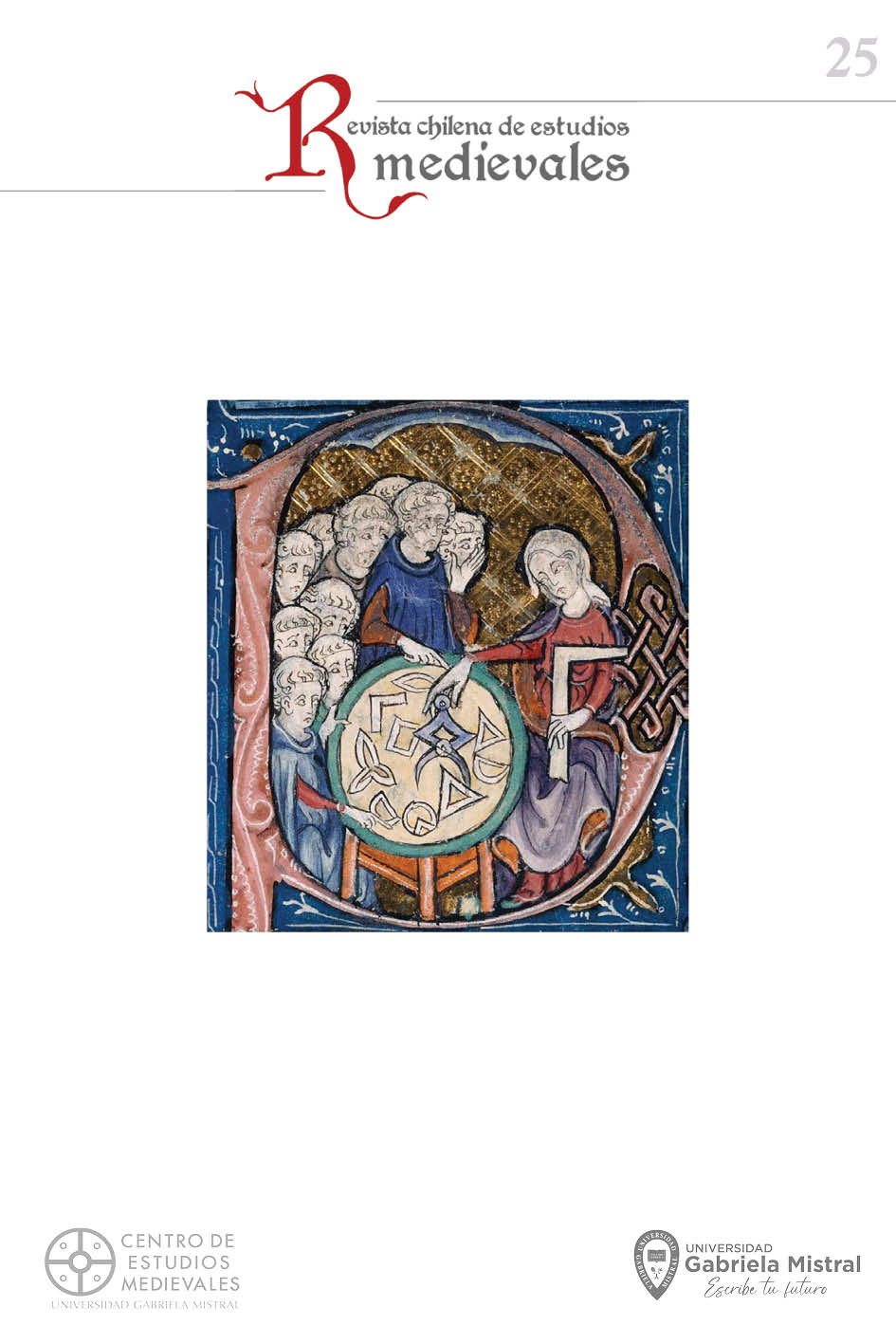The Dance of Death
Keywords:
dance of death, macabre art, late medieval ageAbstract
A descriptive study about the content and context of the Dances of Death, an important exponent of Late Medieval Macabre Art. An analysis of its possible origins, motivations, symbolism and its diffusion throughout Europe. We will conclude this article by analyzing in depth the General Dance, the Spanish version of the Dance of Death.
References
Aurell, Jaume y Pavón, Julia; Ante la Muerte. Actitudes, espacios y formas en la España Medieval; Eunsa, Pamplona, 2002.
Aries, Philippe; El Hombre ante la Muerte; Taurus, Madrid, 1984.
Anders, Jessica; Walk this way:a contextualization of the Dance of Death in MS M.359. Master of Art´s Thesis. Faculty of the Graduate School, University of Missouri-Columbia, july 2016.
Claramunt, Salvador; La Danza Macabra como exponente de la iconografía de la muerte en la Baja Edad Media. En Núñez, Manuel y Portela, Emerlindo; La idea y el sentimiento de la Muerte en la historia y el arte de la Edad Media, Universidad de Santiago de Compostela, 1986.
Clark, James M.; The Dance of Death in the Middle Ages and the Reinassance, Glasgow University Publications, 1950.
Danza General de la Muerte, Edición y estudio de Dinko Cvitanovic y Haydeé Bermejo, Textos Comentados, Cuadernos del Sur, Instituto de Humanidades, Universidad Nacional del Sur, Bahía Blanca, Argentina, 1966.
Español Bertrán, Francesca; La Imagen de lo macabro en el gótico hispano; Cuadernos de Arte Español, Historia 16, Madrid, 1992.
Gómez Muntané, Maricarmen; El Llibre Vermell. Cantos y danzas de fines del Medioevo, Fondo de Cultura Económica, Madrid, 2017.
González Zymla, Herbert; La Danza Macabra, Revista Digital de Iconografía Medieval, Volumen VI, nº11, 2014, págs. 23-51.
Huizinga, Johan; El Otoño de la Edad Media, Alianza Editorial, Madrid, 1985.
Infantes, Víctor; Las danzas de la muerte. Génesis y desarrollo de un género medieval (siglos XIII-XVII), Ediciones Universidad de Salamanca, noviembre 1997.
Martínez Falero, Luis; El Tema de la Muerte en la Literatura Popular Europea: Las Danzas de la Muerte y sus implicaciones doctrinales. Revista Cálamo Faste, Nº 58, oct-dic 2011, págs. 59-65.
Martínez Gil, Fernando; La Muerte Vivida. Muerte y Sociedad en Castilla durante la Baja Edad Media, Universidad de Castilla-La Mancha, Toledo, 1996.
Massip, Francesc; Huellas de Oriente en las Representaciones macabras de la Europa medieval. El caso catalán. Cuadernos del CEMYR, 19, Canarias, dic. 2011. Págs. 137-161.
Kerkahof, Maxim; Notas sobre la Danza de la Muerte. Dividenda. Cuadernos de Filología Hispánica, Nº13, Servicio de Publicaciones UCM, Madrid, 1995. Págs. 175-200.
Núñez Rodríguez, Manuel y Portela Silva, Ermelindo; La idea y el sentimiento de la muerte en la historia y en el arte de la Edad Media, Eds. Universidad de Santiago de Compostela, 1988.
Oosterwijk, Sophie; Fro Paris to Inglond, Tesis Doctoral, Universidad de Leiden, 2009.
Vailló, Carlos; La Muerte de la Danza en la Danza General de la Muerte. Literatura Medieval, Volumen II. Actas do IV Congreso da Associaçao Hispanica de Literatura Medieval, Ediçiones Cosmos, Lisboa, 1993, págs. 221-225.
Van Nievelt, Hendrik; El Fin de la Sociedad Medieval y la Peste Negra, Ed. Origo, Santiago de Chile, 2014.
How to Cite
License
Copyright (c) 2024 Ana Luisa Haindl

This work is licensed under a Creative Commons Attribution-NonCommercial-NoDerivatives 4.0 International License.
Those authors who have publications with this journal accept the following terms:
- The authors will retain their copyright and guarantee the magazine the right of first publication of their work, which will simultaneously be subject to the Creative Commons Recognition License that allows third parties to share the work as long as its author is indicated and his first publication in this magazine.
- The authors may adopt other non-exclusive license agreements for the distribution of the published version of the work (for example: depositing it in an institutional electronic archive or publishing it in a monographic volume) as long as the initial publication in this journal is indicated.
- Authors are allowed and recommended to disseminate their work through the Internet (e.g., in institutional electronic archives or on their website) before and during the submission process, which can produce interesting exchanges and increase citations. of the published work. (See The Effect of Open Access).





